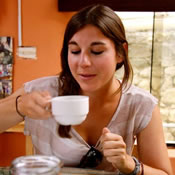|
It happens quickly, seemingly overnight. You stand up after a decent night's sleep and suddenly there's a small, irritating pain in your low back and you can't for the life of you figure out how you would have tweaked it. A few months later, it's your knee and then your left shoulder and neck. Suddenly it's difficult to remember what it felt like to spring out of bed like some kind of superhero without the twinges of pain that cause you to cringe before the day even begins. Yes, getting older can be a literal pain sometimes, but you can decrease your chances of aches running your life with some smart, targeted training. While many are familiar with the benefits of functional fitness training, Mary Derbyshire, author of the book "Agility at Any Age," endorses another kind of training to keep your body in tip-top shape no matter your age. The Alexander Technique is a mindfulness practice that focuses on how our daily habits negatively interfere with how our bodies were designed to move. Introduced to the technique as part of her acting and theater curriculum in college, Derbyshire later became a certified instructor after realizing that she was drawn to teaching and communicating with people. "I think we can all agree you don't move like you did when you were a small child," she says. "Of course, some of that has to do with getting older, but a lot of this also has to do with your habits. When you learn the Alexander Technique, you gain the skills to identify these habits and you learn how to prevent these habits from reoccurring." Referred to as a "reeducation of the mind and body," a typical Alexander Technique session focuses on correcting the student's posture and movement patterns. Days of sitting hunched at a computer or walking with poor posture eventually leads to those aforementioned pains in the low back, shoulders, neck and elsewhere. By recognizing the way our muscles start to move unnaturally over time due to our daily habits—and then feeling the difference with good postures during a session—people can bring balance and agility back to the body over time. "There are several things that most people do that interferes with their poise and balance. Think of a small child, one to three years old. Picture how they move. Their spines are tall and their heads are beautifully poised on top of their spines. They move effortlessly," Derbyshire explains. "Now think of most teenagers and adults. Their heads are no longer resting on top of their spine. As we age we habitually distort this head/neck/spine relationship. Your head is heavy and can weigh between 10 to 12 pounds. When this weight is shifted and [is] no longer well supported by the spine, the rest of you has to work much harder to maintain balance. As a result of this shift and extra work, both your muscles and body tighten. When your muscles tighten and contract continuously, you develop pain." Correcting that compromised movement is at the Alexander Technique's core. Derbyshire lists back and neck pain, shoulder issues and mobility issues, including difficulty walking, among the most common reasons clients reach out to her for help. She credits the technique for helping people regain their confidence in moving well and improving their agility, which she says tends to disappear as we age due to fears of falling or a belief that pain is part of the deal after a certain age. "One very difficult thing for people as they get older is that their lives shrink. By shrink, I mean that they stop doing the things that they love, such as playing golf, gardening or going for a long walk. They may have a setback, a mishap that has brought about pain, and they think, 'Well, this is it. I will have to give up my hobby,'" she shares. "They start believing in preconceived ideas about getting older. They believe that pain and stiffness is an inevitable part of aging. By learning and applying the Alexander Technique, you can reclaim some lost mobility and agility. By learning how to move better and with less muscular tension, you can alter this downward spiral. You can get back to the activities you love." Agility at Any AgeTo bring some balance back into your life, familiarize yourself with some of the basics of the Alexander Technique and try them at home yourself. Derbyshire recommends adopting the walking and sitting suggestions below into your daily life for maximum benefit, and practicing the heel lifts and lie down moves once a day. The more you are conscious of your behaviors as you begin to consider your life in terms of the "Alexander way," the easier and more free your movements will become over time. |
Related Entries
More From SparkPeople
|







.jpg)




.jpg)







.jpg)


